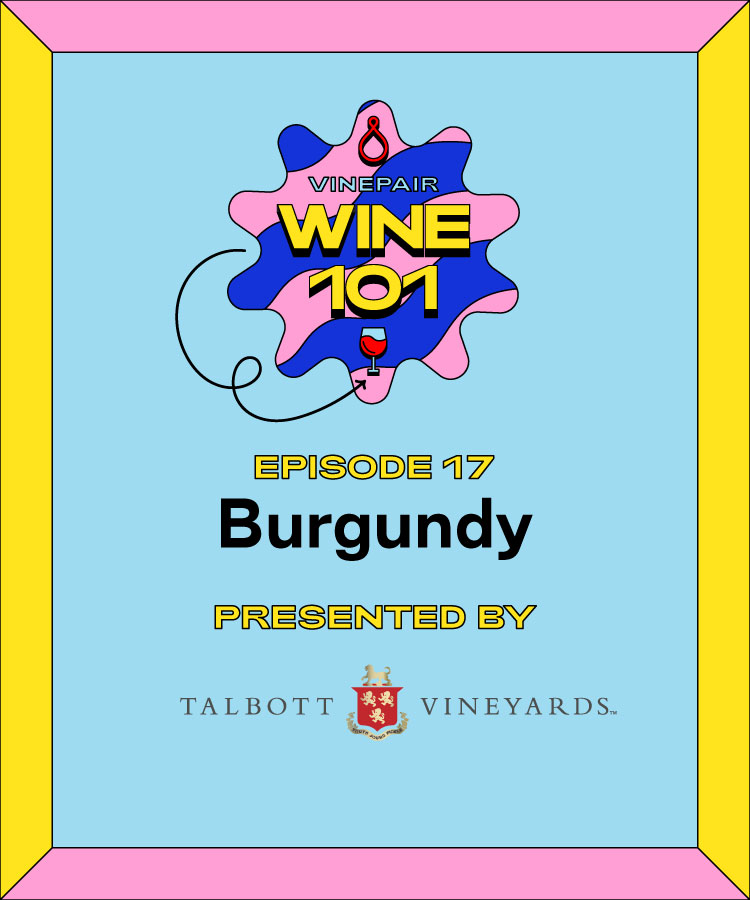Inspired by one of VinePair’s most popular site sections, the Wine 101 podcast takes an educational, easy-to-digest look into the world of wine. This episode of Wine 101 is sponsored by Talbott Vineyards. At Talbott Vineyards, we focus on crafting estate grown Chardonnay and Pinot Noir in Monterey County’s Santa Lucia Highlands. Our celebrated Sleepy Hollow Vineyard is located in one of the coldest grape-growing climates in California — an ideal climate for these two varieties. Here, the brisk wind and fog rolling off Monterey Bay create a long growing season, producing fruit-forward wines with spectacular acidity. Building on a nearly 40-year legacy of meticulous craftsmanship, Talbott continues to produce highly acclaimed wines of distinction.
Welcome back to Wine 101. In this episode, VinePair tastings director Keith Beavers dishes on everything you need to know about the region of Burgundy, and the definitive style of Burgundian Pinot Noir and Chardonnay — which are known as red and white Burgundy. Beavers educates listeners on how the land was formed in this famous region; and about the patchwork of vineyards producing these wines.
Taking it way back: About 43 million years ago, movement within the Earth’s crust created a ledge, or escarpment, that displaced ancient soil and rock — producing one of the most unique soil compositions in the world. Eventually, the Burgundian tribe created the Kingdom of Burgundy in this region. Over the centuries, monks established vineyards that would come to define the most fragmented wine region in the world. The monks noticed that, due to Burgundy’s extremely variant soils, rows of vines next to one another produced a large variety of wine styles. Later, during the French Revolution, Burgundy’s vineyards were auctioned off row by row, resulting in many estates having multiple owners — further fragmenting the region.
More than half a century later, in 1855, Burgundy’s classification system was established. These four classifications are still used on labels of Burgundy wines today: Grand Cru, Premier Cru, Village wines, and Bourgogne (regional wines). Learn more about the complex history of Burgundy by listening to the episode below.
Follow Keith Beavers on Instagram
